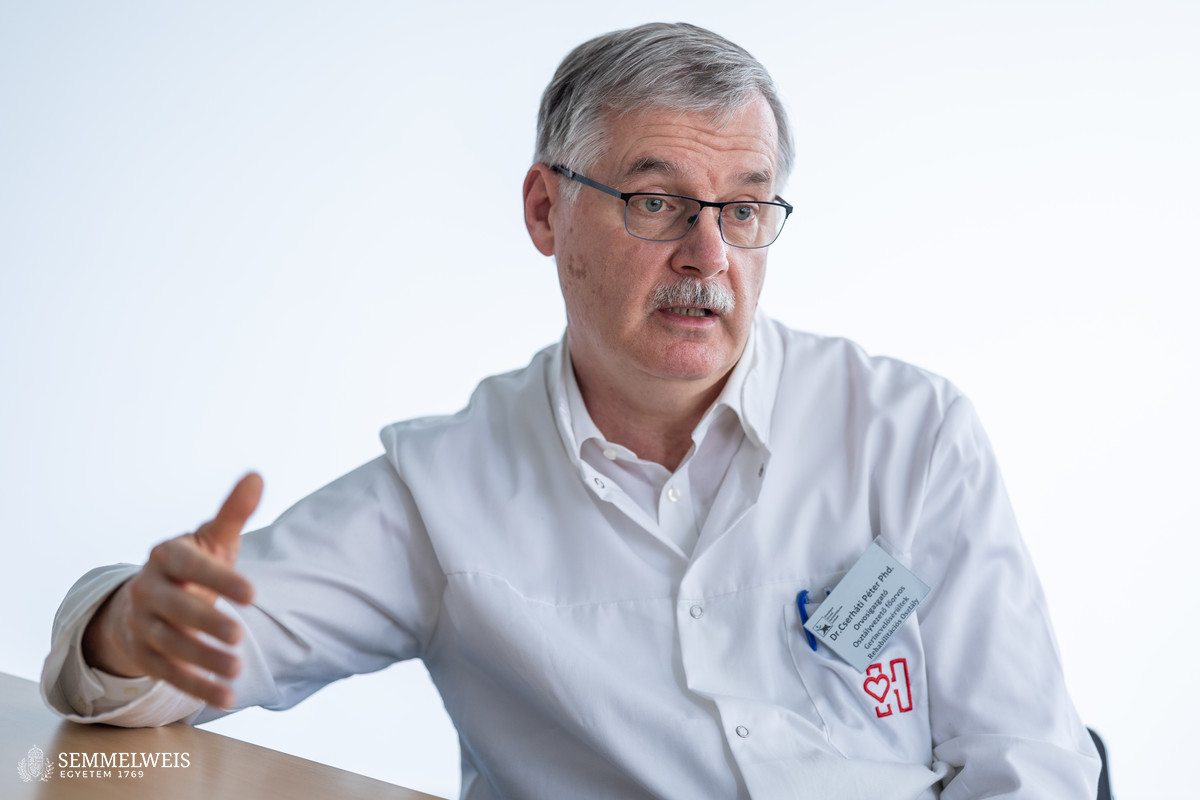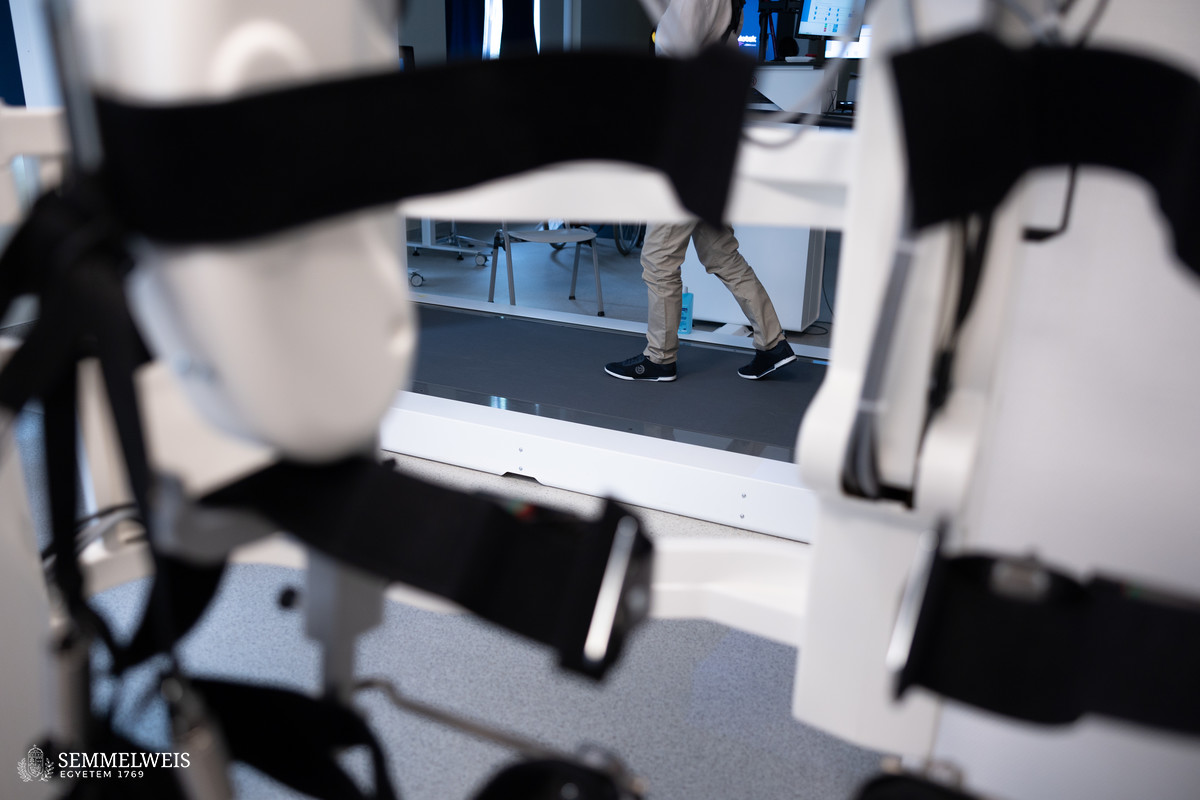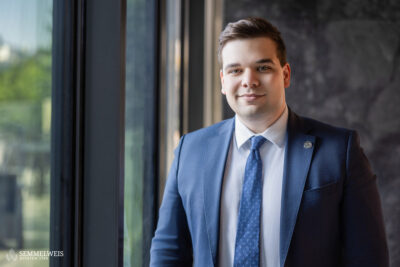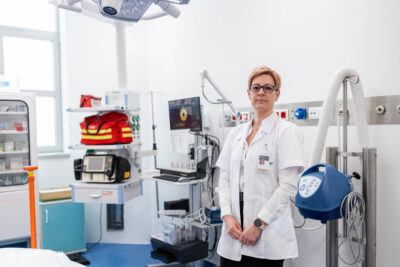By incorporating rehabilitation from the National Musculoskeletal Institute (OMINT), the legal successor of the National Institute of Medical Rehabilitation (OORI), into Semmelweis University from March 1, 2024, the patient care, research, and training profiles of the institution have been expanded with a new specialty that previously only partially existed in the patient care profile. Dr. Péter Cserháti, Medical Director of OMINT OORI and former Rector’s Commissioner of Semmelweis University, responsible for the development of complex rehabilitation, has been appointed Director of the new Semmelweis University Rehabilitation Clinic.
Dr. Péter Cserháti emphasized that OORI, which operates on the outskirts of Budakeszi, is an institution which, together with its predecessors, has existed for almost 105 years and has been a national institution for half a century. “Rehabilitation evolved from the pulmonary patient care in the area in the 1970s and 1980s, and by then it had become an increasingly important part of the patient journey worldwide,” he pointed out. The OORI operated as an independent national institute until 2021, when it merged with the National Institute of Rheumatology and Physiotherapy (ORFI) to become the National Musculoskeletal Institute (OMINT), and continued its activities as a branch of the latter (OMINT OORI) until spring 2024.
Following the integration, we have become one of the largest clinics in the university with 480 inpatient beds, including our 58-bed day care unit.
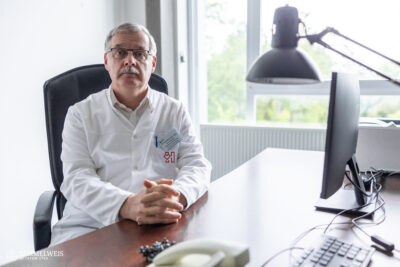 The clinic houses specialized and high-level rehabilitation units for patients with the most severe brain injuries, spinal cord injuries, stroke, double amputations, and polytrauma from all over the country. The clinic is also a progressive center for psychotherapeutic rehabilitation, where the former ‘Tündérhegy’ Department of Psychotherapy continues to operate. These tasks, such as the territorial obligation to provide care as well as regulating the profession on a national level will be retained, the director pointed out. “Rehabilitation works very differently from active care. The patient journey is much longer, lasting not ten days or two weeks but ten months or even two years. We are not concerned with curing the disease, as that is done by the active units before us, but with restoring and improving functions,” Dr. Péter Cserháti pointed out. He said that they had already had a close relationship with several clinical units at Semmelweis University and that this could be further strengthened by the merger.
The clinic houses specialized and high-level rehabilitation units for patients with the most severe brain injuries, spinal cord injuries, stroke, double amputations, and polytrauma from all over the country. The clinic is also a progressive center for psychotherapeutic rehabilitation, where the former ‘Tündérhegy’ Department of Psychotherapy continues to operate. These tasks, such as the territorial obligation to provide care as well as regulating the profession on a national level will be retained, the director pointed out. “Rehabilitation works very differently from active care. The patient journey is much longer, lasting not ten days or two weeks but ten months or even two years. We are not concerned with curing the disease, as that is done by the active units before us, but with restoring and improving functions,” Dr. Péter Cserháti pointed out. He said that they had already had a close relationship with several clinical units at Semmelweis University and that this could be further strengthened by the merger.
“We have consulted the different departments of the university on a weekly basis. We have received patients with paralysis due to vascular obstruction from the Heart and Vascular Center in Városmajor; autoimmune patients from the Department of Neurology; or patients from the Department of Internal Medicine and Oncology who were paralyzed due to lymphoma in the spinal cord. One of our main partners is the Amerikai Road National Institute of Mental Health, Neurology, and Neurosurgery (OMIII), a progressive cutting-edge institution in neurosurgery, which is also merged with Semmelweis University as the Department of Neurosurgery and Neurointerventional Medicine,” said Dr. Péter Cserháti. As he said, their patients particularly benefit from the fact that, in the event of a serious deterioration, the clinic can collaborate more directly with the University’s Department of Emergency Medicine and other relevant units. In some areas, collaboration has already been discussed, for example in orthopedics, as the Rehabilitation Clinic has a specialized orthopedic department with 20 beds, but cooperation in the fields of hand surgery, amputations, and plastic surgery is also envisaged.
“The institution has already delivered a considerable amount of education,” Dr. Péter Cserháti pointed out, referring to the establishment of the university’s Department of Rehabilitation Medicine on the premises of the clinic in 2019. With the inclusion of rehabilitation in the undergraduate curriculum, almost 500 fifth-year Hungarian, English, and German language program students attend clinical block practice each semester. The institution is also responsible for training specialists in the Central Hungary region, and some specialized departments are only available here, so specialist candidates come from all over the country. “Three of my colleagues and I are PhD supervisors, we are engaged with supervising doctoral students, as well as different grants such as the Hungarian Scientific Research Fund (OTKA), the Economic Development and Innovation Operational Programme (GINOP), and the Human Resources Development Operational Programme (EFOP). We also offer very strong therapist training, we have psychologists, speech therapists, and music therapists working here,” the director emphasized. There has already been close cooperation with the Faculty of Health Sciences (ETK) and the András Pető Faculty (PAK), among others, as voice, speech, and swallowing therapists, physiotherapists, dieticians, and conductors have also been visiting the institution for internships, and this cooperation can be further strengthened.
In terms of research, the clinic is particularly strong in medical device development. Being a national center for medical devices, it tests various prostheses, splints, and special devices for National Health Insurance Fund of Hungary (NEAK) admission and CE certification. In addition, thanks to European Union funding, a range of robotic tools has been installed that could open up new therapeutic directions for the future.
“The advance of artificial intelligence across healthcare, including rehabilitation, is spectacular. With our fleet of 30 machines, we can perform specific movements of all the joints of the upper limb, down to the fingers, which can be particularly important for patients with stroke or cervical spinal cord paralysis. We also have a wide arsenal of procedures for regaining walking ability: From robotic large orthoses, unencumbered walking on a treadmill, to augmented walking and exoskeletons, i.e. artificial skeletons with robotic electric motors,” Dr. Péter Cserháti pointed out. He also highlighted the importance of VR therapy and 3D printing for rehabilitation.
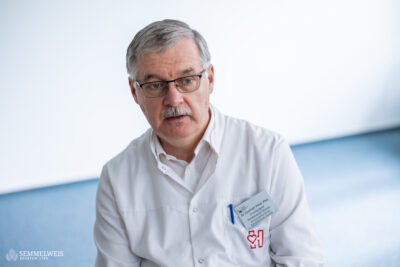 Dr. Péter Cserháti acted as the director-general of the institute from 2013, until the minister of human resources terminated his mandate in April 2020, causing a huge media stir. He then worked as head of department and was reappointed medical director of the site in the summer of 2022, before becoming clinical director at Semmelweis University on March 1, 2024. His achievements at the institute include the construction of the largest solar park in the country, which is also used to heat the special swimming pool for the treatment of patients with spinal cord injury and the refurbishment of certain buildings. Several new departments have also been established, such as the department for post-amputation rehabilitation; the chronic care department for patients with severe vegetative conditions who cannot be rehabilitated; and the coma center.
Dr. Péter Cserháti acted as the director-general of the institute from 2013, until the minister of human resources terminated his mandate in April 2020, causing a huge media stir. He then worked as head of department and was reappointed medical director of the site in the summer of 2022, before becoming clinical director at Semmelweis University on March 1, 2024. His achievements at the institute include the construction of the largest solar park in the country, which is also used to heat the special swimming pool for the treatment of patients with spinal cord injury and the refurbishment of certain buildings. Several new departments have also been established, such as the department for post-amputation rehabilitation; the chronic care department for patients with severe vegetative conditions who cannot be rehabilitated; and the coma center.
The patient itinerary does not end in the operating room, not even in the rehabilitation ward: It must continue in society as well. In Hungary, people with disabilities face many difficulties in terms of accessibility and attitude. We must change this at all costs, both by creating accessibility at the workplace and in transport, and by overcoming communication problems. I feel obliged to do this due not only to my professional convictions but also to my religious roots.
Ádám Szabó
Translation: Judit Szabados-Dőtsch
Photos by Bálint Barta – Semmelweis University
